Raising Fish for Survival Food
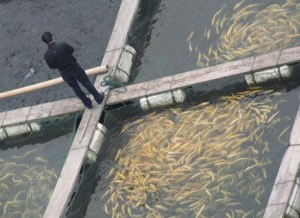
Raising fish for survival food has gained popularity in recent years as more people seek to provide a healthy food source for their families. Due to the overwhelming evidence of chemicals and impurities in foreign raised fish, raising fish at home is a safer alternative than buying fish from the store. Raising fish, also known as aquaculture, can be done on a small scale in backyard ponds, pools, or tanks. We will cover the the basics of raising fish for your self-sufficient and survival food needs, including the best fish breeds, equipment, and care.
Commercial Aquaculture Strategies vs Home Aquaculture Strategies
In commercial aquaculture, there are two general strategies: intensive and extensive.
Extensive aquaculture is space dependent, and utilizes large ponds.
Intensive aquaculture utilizes tanks and requires a great deal of management to produce a lot of product in a small space.
Raising fish at home can follow either of these strategies, but will probably be lower production than commercial systems in order to reduce the amount of equipment and the amount of management that goes into it. There are start-up costs and a learning curve associated with raising fish for food, so make sure to research this type of project thoroughly.
Raising Fish in a Farm Pond
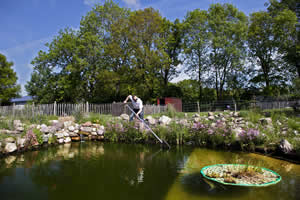
The home version of an extensive aquaculture could be as simple as a farm pond. If you are fortunate enough to have such a pond on your property, it is a relatively simple task to stock it with regionally appropriate fish.
In my area of the Midwest, crappie, bass and bluegill are all viable choices for larger ponds. The key elements are to be sure that the pond is deep enough not to freeze solid in winter and to provide a cool refuge in summer.
If your pond is large enough to have a working ecosystem, almost no management will be required, and no feed inputs either. The primary drawback to a farm pond is the difficulty of harvesting. There is no good way to harvest your fish en mass, and you will be required to do it the old fashioned way, with a fishing pole.
This is not all bad, and a well-functioning pond should be able to provide you with a good meal of fresh fish anytime you want to do a bit of fishing.
Fish Ponds in Warmer Climates
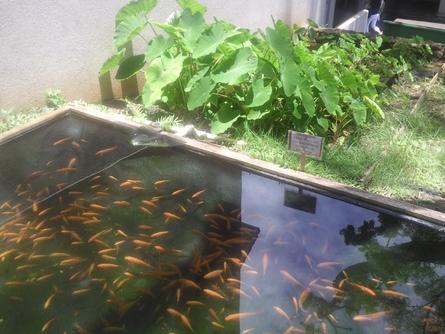
If you live in a warmer climate, say Florida, a shallower pond may be stocked with Tilapia. Tilapia offer a lot of advantages in warmer climates. They are fast growers, ready breeders, and quite good eating. In a shallow pond, they can be harvested with a seine net.
If you want to ramp up production, they can be fed a commercial diet that meets your feeding philosophy. For example, there are some fine organic fish feeds available, even Purina makes a fish chow.
You are also at liberty to choose a less managed approach and just let your fish eat what your pond produces. A laissez faire strategy will require a lighter stocking density and a slower grow out but will produce virtually free food.
Raising Fish in Tanks
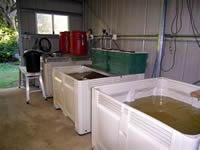
If you want to grow Tilapia in colder climes, tank culture is your best bet. Fortunately, Tilapia are quite hardy and can tolerate a wider range of water conditions than many species.
Your prime enemy where Tilapia are concerned will be water temperature. Certain strains of Blue Tilapia can survive in water temperatures as low as 48 degrees, but growth is only maintained north of 70 degrees.
Grow out, from fry to fillet, is about an 8 month process, so if you time things right you can fit a growing cycle into the warm season in most areas of the continental United States without too much heating.
We have used a lot of things for tanks, ranging from old boat lift floats (large fiberglass ones with the top cut off) to tanks designed for the purpose. We are currently in the design phase of a system utilizing Easy Set Pools (bought at Walmart and Target in end of season sales for very low prices). I like the 10 foot models.
Filter System for Raising Fish in Tanks
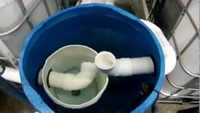
Our filter system, which we tested on a previous model, consists of a 25 gallon stock tank, a five gallon bucket, some lava rock and gravel, and a 750 gallon/hr. ornamental pond pump. 12 volt pumps are available and are a good idea in the event of a power failure.
The filter is constructed by drilling a bunch of holes in the side of the bucket, up to about 6 inches from the bottom. This bucket is placed in the middle of the stock tank, weighted down with a brick. The gravel and lava rock are added to the stock tank, surrounding the bucket to within 3 or four inches of the top of the tank.
The water pump is placed in the center of the bucket. The gravel and lava rock provide a substrate for the bacteria that digest fish waste and clean the water. The bucket, and the placement of the holes, ensures that all water will be drawn through the gravel.
The pump returns water to the fish tank, and water spills into the filter tank from an overflow pipe in the pool (always pump water into rather than out of your fish tank. That way, a broken pipe will result in a burned out pump rather than an empty tank full of dead fish).
Aquatic plants can be kept in the pool to absorb more waste and excess nutrients. Don’t sweat it if you get an algal bloom, this is free food for your fish (unless it becomes too extreme).
Determining Your Ideal Grow Season for Raising Fish
While every effort should be made to complete your grow out during the warmer months, this may not always be feasible. Since this is the case, some provision to heat the water should be made.
One good idea, if you can swing it, is to put your fish tank in a green house. This will allow you to fully capitalize on any sunlight (in Missouri, it is mandatory that Tilapia be raised in an enclosure of some sort anyway to prevent “escape”. Other states have similar regulations).
Aquarium Heaters for Raising Fish
Large aquarium heaters can be used for a little extra boost of heat as well, outdoor heaters are fine, just make sure to monitor the temperature. A friend of mine built a barrel stove with water coils inside; by pumping water through the coils and back into his tank he was able to warm his fish water with wood heat.
In a system like this it is imperative not to use copper pipe since copper is toxic to aquatic organisms. Stainless steel propane line is your best bet in this application. If your tank is in a green house, it will heat the environment quite nicely.
Best Breeds for Raising Fish for Food
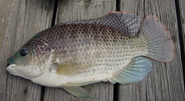
Blue Tilapia are your best bet for raising fish because they are the most cold tolerant. Fish are available from a number of sources, get online and find the closest supplier to you balanced with price.
If you don’t wish to buy fresh stock for each grow out run, you can establish a breeding colony in a smaller tank, or even in a large aquarium in your home. Stocking densities should be modest to avoid a great deal of water quality and feed management. Assuming a target weight of 2-2.5 lbs/fish, you should keep your density down to one fish to every 5 to 10 gallons of tank volume.
Trout are a lot more difficult, and should not be undertaken unless you have a ready supply of cold, highly aerated water. If you have a high volume spring you might try raising trout in raceways or tanks, but you will be dependent on a source of fry for each grow out run.
Additional Tips for Raising Fish
Fish can provide an important source of protein and variety in your self-sufficient or survival diet. They require a bit of infrastructure, but once things are set up and rolling they don’t require a great deal of work to maintain.
Keep an eye on things, don’t overstock, and don’t overfeed and you will be enjoying fresh fish dinners on a regular basis.

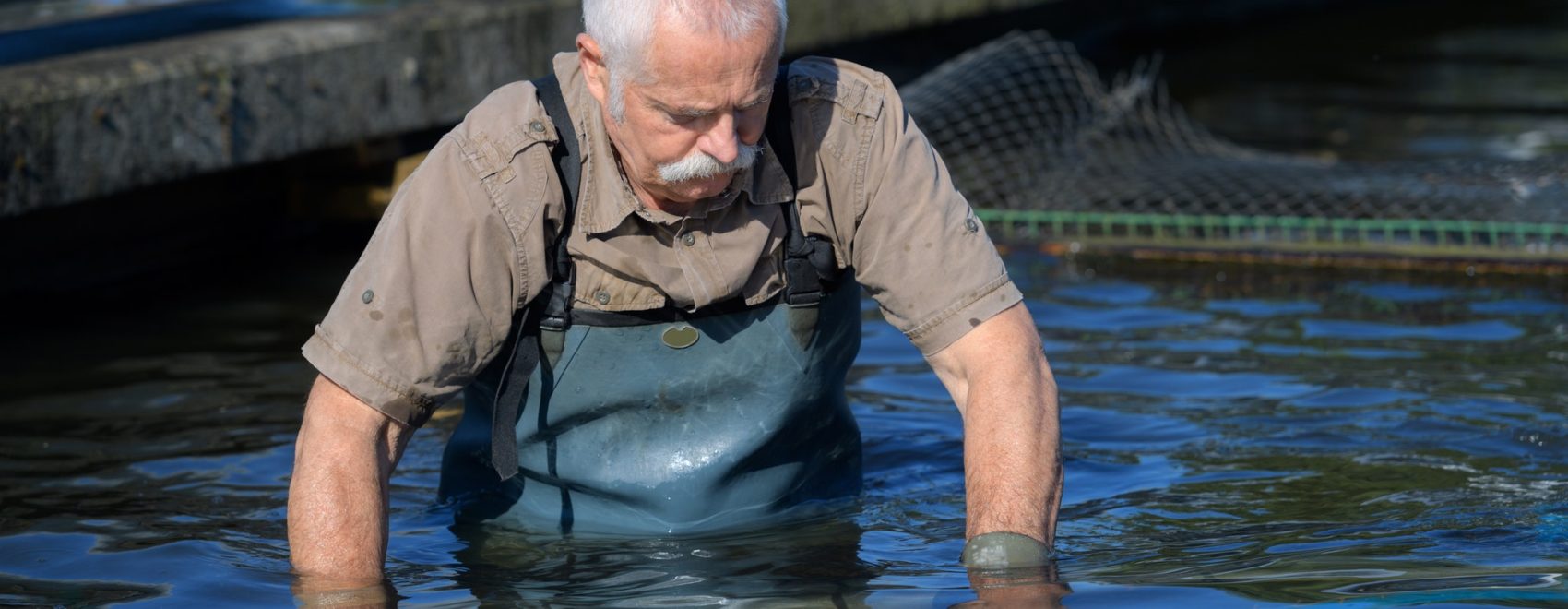
I live in Los Angeles County and I’ve read about restrictions of raising tilapia for food in a backyard pond, I want to know if I can raise tilapia for personal purposes.
Thanks
No you are not allowed to do anything in CA
Fish rising can be easy if your pond is supporting to water life. If you maintained it with Pondpro2000 it will be easier as it is eco-friendly.
Very well subject for those that have room in back yard for the round pools or a place to dig a small pond.
You can raise catfish in the same way and they are cold water fish but they grow faster in warm water. Channel cats are one of the best to raise